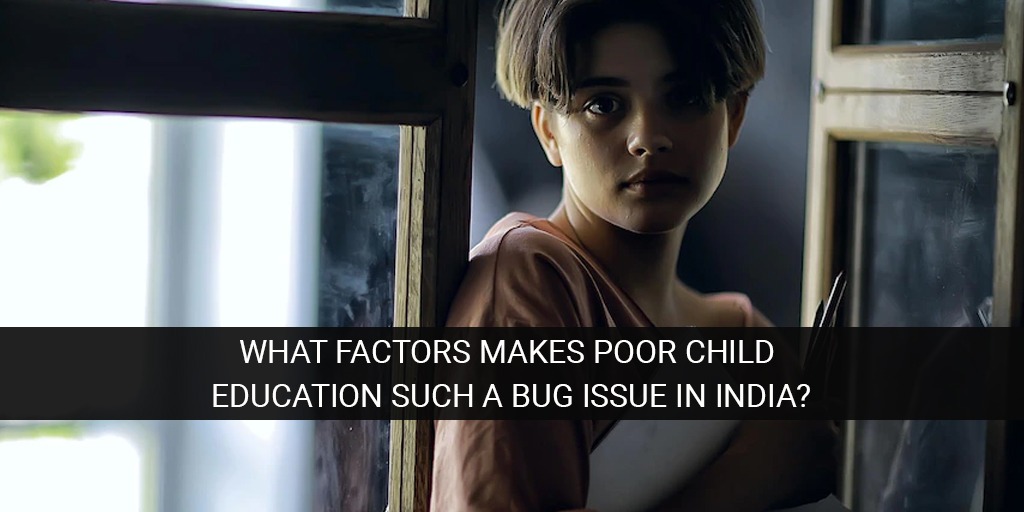In India, poor child education is a significant problem. On the one hand, despite our economic progress, a segment of the population continues to be deprived of fundamental necessities. The Right of Children to Free and Compulsory Education Act, 2003, was made possible thanks to the Indian Constitution. Children between the ages of 6 and 14 are entitled to free and compulsory education under Article 21A. The same is stated in Article 45 of the Directive Principles of State Policy. It must not be forgotten that education is the bedrock of the ideas that society must be built on.
Poverty and Children
Millions of youngsters in India still work for a living, and the poorest children are not educated. They aren’t getting enough to eat. 373 million Indians are still suffering from severe poverty. The majority of those living in poverty are children, who are the country’s future. According to a joint report produced by UNICEF and the International Labor Organization in 2019, India is home to 30.3 percent of the world’s poorest children. The country has made progress in lowering the Multidimensional Poverty Index (MPI), yet the core challenges persist. The country’s current burning challenges include poor child education, lower school dropouts, food security, and child mortality.
Illiteracy in India
The Right to Education Act of 2009 has helped India reduce the number of children who are out of school. Despite this, India still has 6 million youngsters who are not in school. Economic insecurity caused by the COVID-19 pandemic has resulted in an increase in the number of children who are out of school. Several children have begun assisting their parents with domestic duties, earning a daily income, or caring for younger siblings. The pandemic has made girls even more vulnerable. As they spend more time at home, they become more involved in family tasks and, in many cases; they become victims of child marriage.
Dropout Problems in the Educational System
According to a recent ASER report, many young children did not return to school after the reopening, and there was a significant increase in out-of-school children in the 6–10 age categories. This has risen from 1.8 percent in 2018 to 5.3 percent in 2020, and from 4 percent to 5.5 percent among all children aged 4 to 16. One of the main reasons for this could be the financial hardships that parents are experiencing as a result of the pandemic. School-aged youngsters are also frequently plagued by poor academic performance. This learning barrier is the result of a lack of a solid foundation. Quality early childhood education usually provides this foundation. Another issue is a scarcity of trained teachers and a lack of resources.
Join us in our goal of educating every child!
Sahyog’s care education programme helps poor children in urban slums and rural areas receive an education. The key to development is poor poor child education. We have experienced a variety of challenges throughout the years, but we have persevered and created a number of solutions that enable us to continue sharing the gift of education with poor children.

